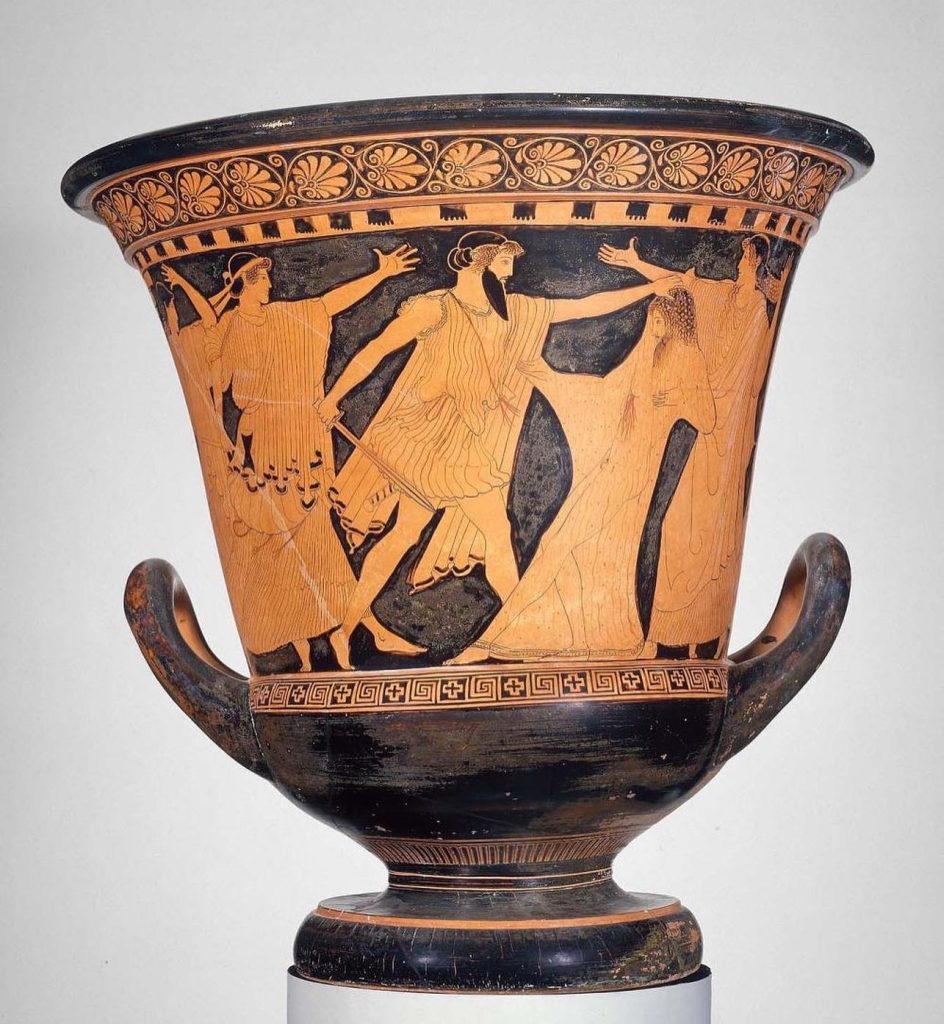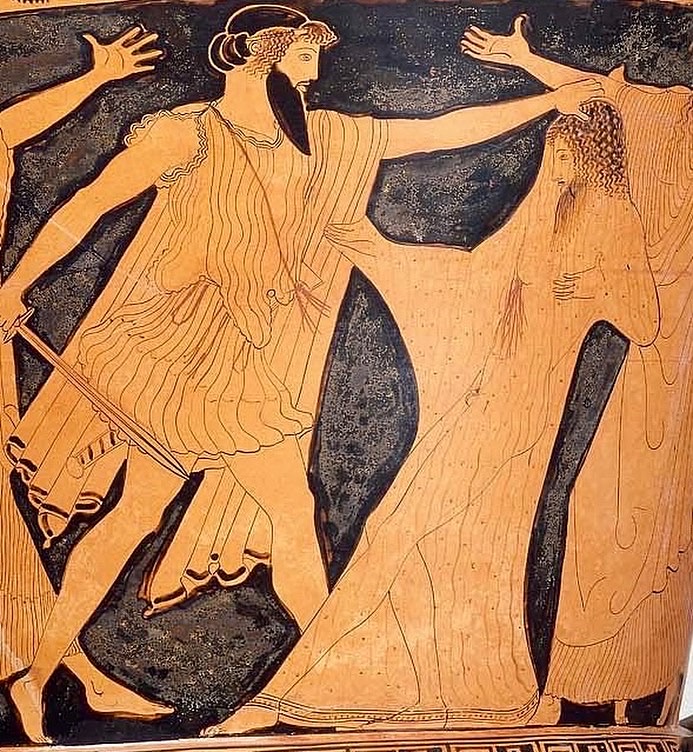Agamemnon returned home, victorious from Troy, to his wife Clytemnestra. Unbeknownst to him, she had been stewing for the last decade (not happy with him for sacrificing their daughter for favorable winds to Troy, or bringing home his concubine) and took a lover while plotting revenge.
The ambush Clytemnaestra had in store for her husband was masterfully recounted by the Athenian tragedian Aeschylus in ca. 458 B.C. She flattered him, rolled out purple brocaded textiles for his royal bare feet and incited her lover Aegistheus to murder him in cold blood while he was enveloped in the rich lengths of cloth (described evocatively as a web or net).


This red-figure vase, made in the decade before Aeschylus’s tragedy, shows the king falling backwards enveloped in a diaphanous and richly embroidered cloth. His defenseless, nude body and bedraggled hair are visible through the drapery, as is the gushing chest wound Aegisthus has inflicted on him. His would-be usurper towers before him, beautifully coiffed, grasping his head, and preparing to strike a second blow.
Clyatemnaestra rushes in behind her lover brandishing a small axe in one hand, while maidens gesticulate on either side. And that’s just one side of the krater!
There is a temptation to read such a vase as an illustration of Aeschylus’ tragedy, but it should be resisted. More likely such a masterpiece of painting reflects just how pervasive Homeric epic, in numerous variations and after centuries of oral tradition, was in contemporary Athens.




